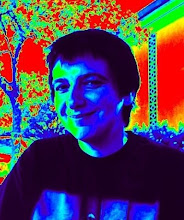Deconstructing quarks and strange moduli

I am about to leave Sweden: got a pretty good time up here, spring like weather in the past few days. I even got to see some of the islands out in the Stockholm bay, not in frozen winter this time but in leisurely spring warmth.
I saw there's a program on moduli spaces going on at a local research institute near here. I was busy with some research work of my own that I was trying (unsuccessfully)
to finish before leaving here, so I didn't pay too much attention to what was going on there.
There is something I find very relaxing about these northern European countries, especially when summer approaches and days get long and darkness recedes to mild shadows in the middle of the night. Maybe I wasn't so efficient at working, but at
least I read a couple of very good books while here.

One is "constructing quarks" a "sociological" history of particle physics written by
Andrew Pickering and published by the University of Chicago Press. If, like me, you are strongly allergic to silly anecdotes in science books and never quite manage to read a book about the "history" of science for that reason, well, please do read this book! This is history of science as it should be written, guaranteed anecdotes-and-bullshit-free, it is just what it should be, a sound and very interesting account of the development of ideas and the impact on the practices and accepted paradigms of the scientific community involved. This is finally a book about a fundamental chapter in the history of science written by a serious historian who gets all the science right. We need more of these books!
The book details an important transition in the history of particle physics, from the phase termed "old physics" by the author to a "new physics" which culminated in the establishment of the "Standard Model" of elementary particle physics as we now know it. The first phase lasted through the 1960s and was based mostly on experimenting with the most commonly observed events: resonances in the low energy spectrum and soft-scattering in the high energies. The corresponding dominant theoretical models were the S-matrix approach and Regge theory for the analysis of the high-energy soft-scattering data. The new phase, dominated at the theoretical level by the development of the quark model and of gauge theories, corresponded in the experimental practice to a shift of attention towards rare events: weak neutral currents, hard-scattering. The book follows very closely and carefully, with plenty of very detailed information, the many steps leading to this transition and to the final establishment of the current paradigm of particle physics. Along the way one meets beautiful accounts of the theoretical and experimental history of many intermediate ideas: the constituent quark model, current algebras, the parton model, the input from neutrino physics, Yang-Mills gauge theory, the Higgs mechanism and electroweak unification, the renormalizability of gauge theories, the problem of the weak neutral currents, the problem of scaling, asymptotic freedom and quantum chromodynamics, the establishment of the Standard Model. All along one sees the difficult interplay of theory and experiment, the importance of established traditions and training in the community, the difficulty of switching to new paradigms and what weights the most in determining the final transition to a new model.

Another very good book I was reading while in Sweden was the book by Shmuel Weinberger on moduli spaces (appropriately). It is titled "Computers, Rigidity, and Moduli: The Large-Scale Fractal Geometry of Riemannian Moduli Space" and published by Princeton University Press. It arises from a lecture series (of which it keeps a nice informal tone) and is largely inspired by the work of Alex Nabutovsky on complexity in logic and geometry. (By the way Nabutovsky has some recent work on "logic phenomena of euclidean quantum gravity" that seems extremely interesting too.)
Roughly speaking, the general philosophy presented in the book is that logical complexity generates geometric complexity. The notion of "geometric complexity" is related to Morse theory: a function on a complicated geometry (topology) is forced to have many more critical points than a typical function on a simpler geometry. The type of spaces whose complexity is explored in the book are moduli spaces of certain geometric data: for example the moduli space of isometry classes of Riemannian metrics with an assigned curvature bound on a specified smooth manifold.
Logical complexity is related to algorithmic recognition problem: when is a given object in a family isomorphic to a standard one? (When is a given group trivial for example.) The problem is the possible existence of "doppelgangers", meaning objects that are (algorithmically) very hard to distinguish from the model case.
The introductory chapter of the book is a beautifully written overview of the main philosophy and motivations for the whole enterprise. It reads as a very entertaining piece, with few technical details, but a wealth of useful information which helps putting the whole story in perspective.
The following chapters are roughly divided as follows: the first chapter introduces the group theory side of the story, while chapter two deals with topological aspects, discussing connections to many subfields of topology, from homology spheres to the Novikov conjecture. The third chapter takes on a more dynamical systems perspective: coding, entropy, the important notion of Kolmogorov complexity. This shows concretely the interplay between logic and geometry in the problem of closed geodesics in Riemannian manifolds. Finally, the last chapter is the heart of the book and deals with the large scale (fractal) structure of the moduli spaces arising in Riemannian geometry. It is a very interesting book, with an unusual perspective on mathematics. If you are looking for something different to read, that's a very good pick.
A book review of "Constructing quarks"
Mittag Leffler Institute
Logic phenomena of euclidean quantum gravity

